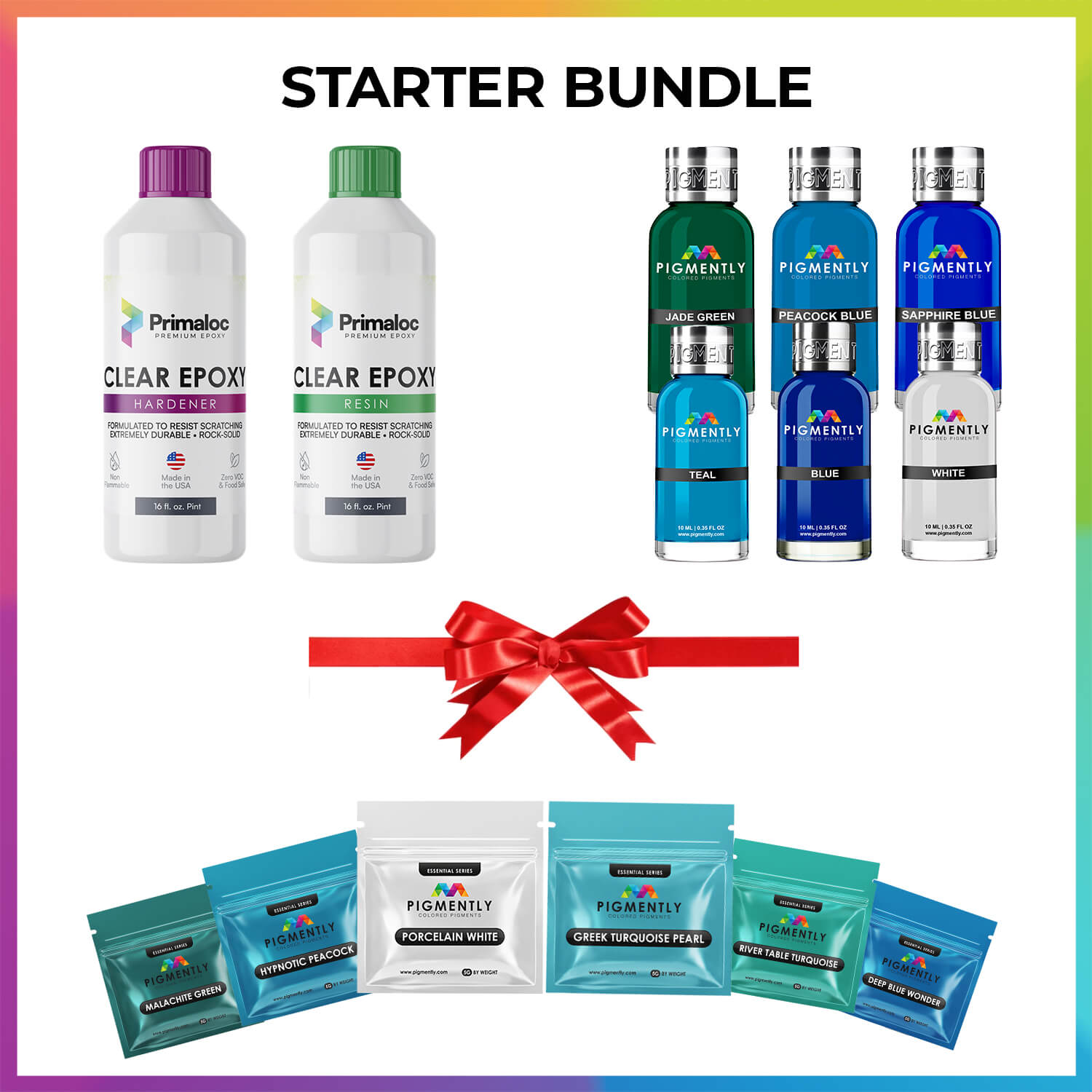Welcome to Pigmently, our online store for high-quality mica powder pigments and liquid dyes.
Powder pigment and mica powder are two terms often used interchangeably in a casual manner. They both refer to similar—sometimes the same—products, which makes this an easy shorthand for referencing powder pigments.
However, they aren't technically the same thing. There are noteworthy differences that are useful to know when deciding which colorants to use for your creative endeavors.
In this article, we'll explain what "powder pigment" and "mica powder" mean, then clarify the differences between them and how they relate to each other.
What Is Powder Pigment?
Powder pigment just refers to essentially any dry pigment in powder form. In fact, the phrase "powder pigment" is mostly redundant in a technical sense, because pigment specifically refers to powdered colorants.
In the past, methods for creating pigments were often grueling but fairly simple. The process of making pigments today, however, is a complex synthesis of chemistry, engineering, and technology. This leads to consistency in both color and potency that was far more difficult to achieve.
How Are Modern Pigments Made?
There are two primary types of pigments: organic, which are carbon-based molecules, and inorganic, which are generally metal oxides.
Organic Pigments
Organic pigments are typically derived from coal tar and other petrochemical sources, undergoing complex chemical reactions to create a vast array of colors. These processes often involve the mixing of various intermediate chemicals in multi-step synthetic sequences under controlled conditions, which might include catalysis or high temperatures to foster the formation of the desired colorant.
Inorganic Pigments
Inorganic pigments, on the other hand, are often made by more direct processes such as calcination or precipitation. For instance, titanium dioxide, a common white pigment, is produced by reacting titanium minerals with sulfuric acid, which is then calcined at high temperatures to produce the pure pigment.
Iron oxide pigments are made through a precipitation process that involves reacting iron salts with alkali to form the desired oxide, followed by washing, filtering, and drying. Metals like cadmium, chromium, and zinc are also processed to create vivid and durable inorganic pigments.
Quality Assurance for Pigments
These days, there's a lot of quality control regulation for the purposes of ensuring consistency and safety in pigment production. It's also valuable to produce pigments that maintain their color even in the presence of UV radiation—such as from direct sunlight. Thus, efforts to improve the resistance of pigments to this issue have led the the develop of lightfast and colorfast pigments, which retain their color over much longer periods of time.
What Is Mica Powder?
Mica powder requires a much shorter explanation. Mica powder is the powdered form of mica, which is the name of a group of 37 silicate minerals known for their reflective sheen and perfect mineral cleavage.
When mica is ground into powder form, it has a variety of practical uses, but can also be used as a pigment for aesthetic purposes. These mica-based pigments exist in a variety of colors, but are also often combined with additional additives to achieve distinct tones outside of mica's limited range.
Is Powder Pigment the Same as Mica Powder?
No, mica powder pigments are actually a subtype of powder pigment. To be considered a mica powder, a pigment must consist primarily of any number of the 37 mica minerals.
Mica powder pigments have a couple of distinct features that other powder pigments may not have. For one, they're insoluble, meaning they don't dissolve in water. Secondly, the mica minerals they're made of have a reflective surface (when cleaned), making the mica particles sparkle when in the presence of light.
In our Pigmently store, you'll find a wide range of premium mica powder pigments that are potent, vivid, and colorfast—for vibrant, long-lasting results.
Pigmently: Your Trusted Source for Premium Mica Powder for Epoxy
At Pigmently, we're committed to providing premium mica powders for DIY creators of any skill level. Each of our powder pigments is strictly produced to a refined formula.
By using only high-grade ingredients to ensure a clean, potent, and vibrant result, we're able to maintain our high standards of quality, which allows us to offer a selection of high-grade pigments that blend well with other mediums.
In our store, you'll find a wide array of premium mica powders to use in your creations. You can also view our premium liquid dyes collection.
If you find yourself interested in multiple shades, consider our curated Colorant Value Bundles, which are cost-effective ways to obtain a variety of colorful mica powder pigments.
Bring your creations to life with premium Mica Powder Pigments by Pigmently!



